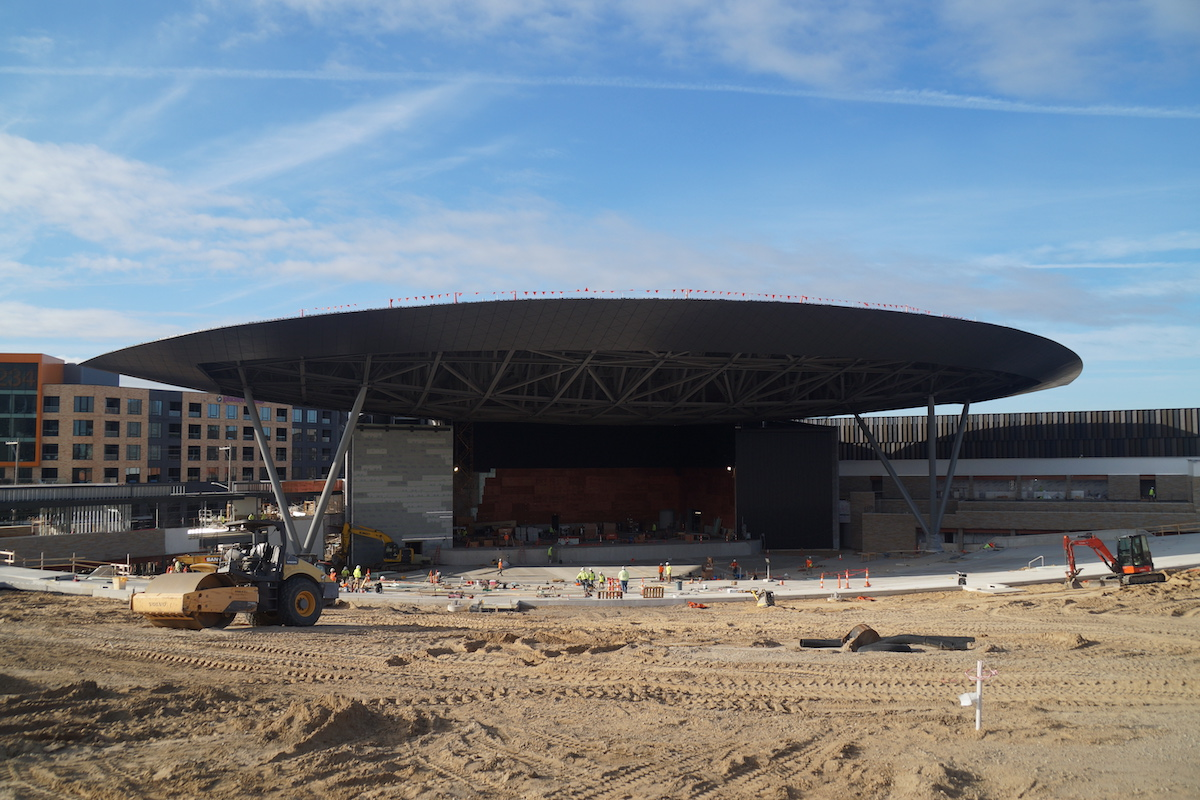I-205 is a nearly 37-mile interstate that intersects multiple major highways, serves the Portland International Airport, and extends from the Portland area into Washington state.
The project is taking place along a 7-mile stretch of I-205, which has an average daily traffic count of over 100,000 vehicles. It is the only part of I-205 that has two travel lanes. Drivers experience up to seven hours of traffic congestion each day. The speed limit on I-205 is posted at 55 or 65 mph. However, due to congestion, drivers often have to travel at speeds of 45 mph or less. As part of the project, the Oregon Department of Transportation (ODOT) is expanding capacity by adding a third lane in each direction.
Besides congestion in the project area, this section of I-205 also has more safety issues due to the bottleneck created by the missing third lane. To address the congestion and safety issues, ODOT is adding seven traveler information signs. “The signs will alert travelers about congestion and inform them about how much time it will take to reach certain destinations,” says Della Mosier, a Deputy Director for ODOT’s Urban Mobility Office.
Other elements of the first phase of the project include realigning and widening the on- and off-ramps, removing one of two closely spaced on-ramps, and adding a roundabout. It’s believed this will eliminate some merging and weaving, reduce rear-end crashes, and improve traffic flow. Three new sound walls are also being installed in the project area.

| Your local Deere & Co dealer |
|---|
| AIS Construction Equipment |
Lastly, the team is improving the local systems adjacent to the interstate. These improvements include adding bike lanes, increasing park access, and ensuring the area adheres to ADA requirements.
The state government says, “Oregon has the potential for a 9.0-plus magnitude earthquake caused by the Cascadia Subduction Zone and a resulting tsunami of up to 100 feet in height that will impact the coastal area.”
While not as predictable as a clock, the mere possibility of a massive earthquake has inspired ODOT to prepare. As the saying goes, it’s better to be safe than sorry.
Along these lines, ODOT is upgrading or replacing bridges in the area to make them able to withstand a major earthquake. Nine bridges will receive this treatment as they are part of a corridor that the state government envisions as a critical lifeline route in providing supplies and services to the region after a disaster.
The 2700-foot-long Abernethy Bridge, originally constructed in 1970, spans the Willamette River between Oregon City and West Linn. It’s the most significant of the nine bridges.

| Your local Trimble Construction Division dealer |
|---|
| SITECH Michigan |
The area around the bridge has silty sands, gravel, and clay soils – underlain by basalt bedrock. “Designing a bridge to be able to withstand a major earthquake in this geological environment was an engineering design and construction challenge,” Mosier says.
To fulfill their mandate, the design called for digging down more than 200 feet to bedrock. To get to this depth, the team is installing giant steel-reinforced columns that are 12 feet in diameter. A special oscillator, which the team has dubbed “Oscar”, will be shipped to the site to install the fully cased drafts. Oscar is 34 feet long, 20 feet wide, and weighs 200,000 pounds. Its massive weight and height make it difficult to transport. It will be broken into three pieces when moved to the site. Mosier notes it’s the first of its kind to be used in the United States.
The program aims to employ people near the project area who are in a lower income bracket. There are opportunities for people to get apprenticeships in nine different trade specialties and work themselves up to be a journeyman.
Those hired as part of the program work directly with Kiewit, who is the contractor on this phase of the project. This stipulation was part of the contract. “Kiewit has worked within such parameters in the past and successfully delivered major infrastructure projects,” Mosier says.
It’s estimated that the entire project will cost $1 billion. Phase one is budgeted at $495 million. Most of the funding is from the state, whose legislature passed bills in 2017 and 2021 to sell bonds and borrow funds for the project. The federal government is also contributing to the project. Tolling revenue from the bridges and the corridor will be collected and used to pay back the bonds.

| Your local Deere & Co dealer |
|---|
| AIS Construction Equipment |
Phase one of the project began in the spring of 2022 and is expected to be complete in 2025. Phase two, which will focus on the other bridges, is expected to start in 2024 and be complete in 2027.
Upon completion of the I-205 Improvements Project, the state will have a seismic route on the corridor that will provide travelers with a safe reliable trip. This project satisfies immediate and future needs.








































































